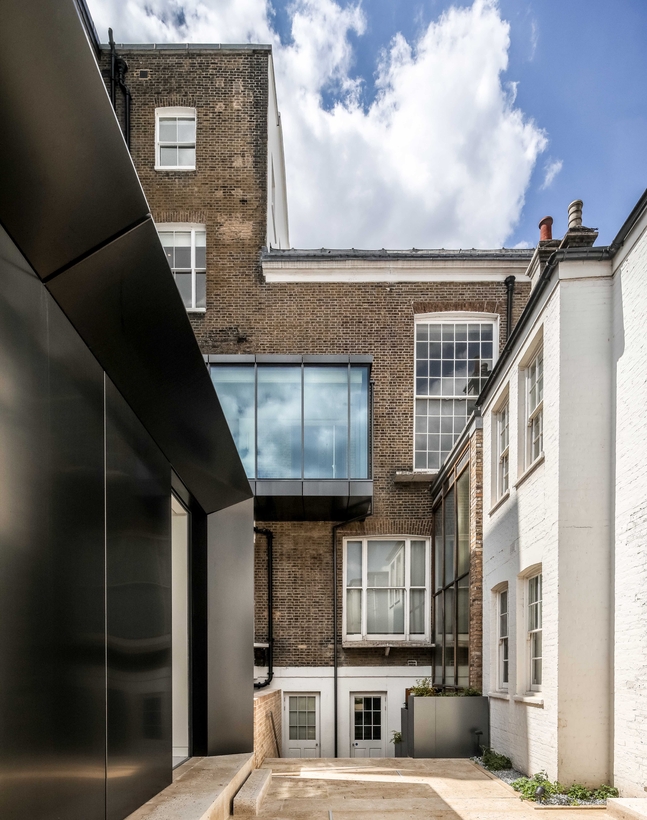“I think it’s fair to say this is unique in the world,” suggests Paul White, the founding director of the architectural firm Buckley Gray Yeoman (B.G.Y.). He is speaking of Cromwell Place, the new arts hub in West London, which he and B.G.Y. have led through a meticulous four-year, $26-million redesign. A working and exhibition space for galleries, dealers, collectors, and art professionals, it’s a taste of the future, opening on October 10.
As to why Cromwell Place took so long to develop, there are three answers to that question. First, the sheer scale and scope of the project: B.G.Y. was working with five interconnected Georgian buildings, Numbers 1 to 5, and the addition of a double basement added further complication. Second, the complexity that comes with a listed property, deemed of cultural importance by the British government: Number 4 at Cromwell Place, for instance, was once the residence of painter Sir John Lavery, who used his studio at Number 5 to host notable guests that included Winston Churchill, Auguste Rodin, W. B. Yeats, and George Bernard Shaw. Third: the coronavirus.
The idea for Cromwell Place originated with John Martin, a London-based art executive who co-founded the Art Dubai fair, is a board member for Mayfair Art Weekend, and runs his own Mayfair-based gallery—a position he’s held for the past 28 years. As the founder and creative director of Cromwell Place, Martin has sought to merge the best elements of co-working spaces, clubs, and international fairs. “Art fairs have been incredibly popular, but they take gallery owners away from their galleries,” explains White. “What this does is it brings people back to the galleries, back to where the art is rather than all having to travel.”
“Art fairs have been incredibly popular, but they take gallery owners away from their galleries.”
Cromwell Place is a 35,000-square-foot heritage building designed to bring galleries, dealers, advisors, collectors, and art professionals together in one place. It’s not simply a static gallery, however. Inside are private offices, storage spaces, viewing rooms, and 14 different exhibition areas—the most impressive of which is vast and contemporary with polished concrete floors. “We’re not like a lot of traditional buildings where you have one way in, one way out,” says White. “We have this fluid series of buildings.”
As for sustenance, more formal dining in the Club Room and lighter dishes in the Library are both under the direction of Michelin-starred-chef Ollie Dabbous, known for his nonchalant decadence. (The dining spaces won’t open until next year.)
Along with an annual fee, Cromwell Place members pay only for the services they require. And with gallery owners increasingly questioning the need for permanent showrooms and glass-fronted offices, Cromwell Place’s time-share model is a template with instant appeal. “I think people want to be part of the collective,” White says. Galleries that have signed on so far include Lehmann Maupin (London, Hong Kong, Seoul, and New York), Addis Fine Art (London and Addis Ababa), Alexander Gray Associates (New York and Germantown), Gallery Wendi Norris (San Francisco), Ingleby Gallery (Edinburgh), and Lawrie Shabibi (Dubai).
There was a period when it felt as if much of London’s art, fashion, tech, and commerce was relocating east, but a look around South Kensington suggests this may have been an oversimplification. Cromwell Place is surrounded by many of the city’s leading cultural institutions—from the V&A to the Science Museum to the Royal Albert Hall. The historic white-stucco building itself, says White, “combines contemporary art with historic architecture. These used to be private offices, so as a member of the public you wouldn’t ever get to see inside these buildings unless you had a meeting. But they are monuments of our history, and now that they are galleries, everyone can enjoy these buildings.”

